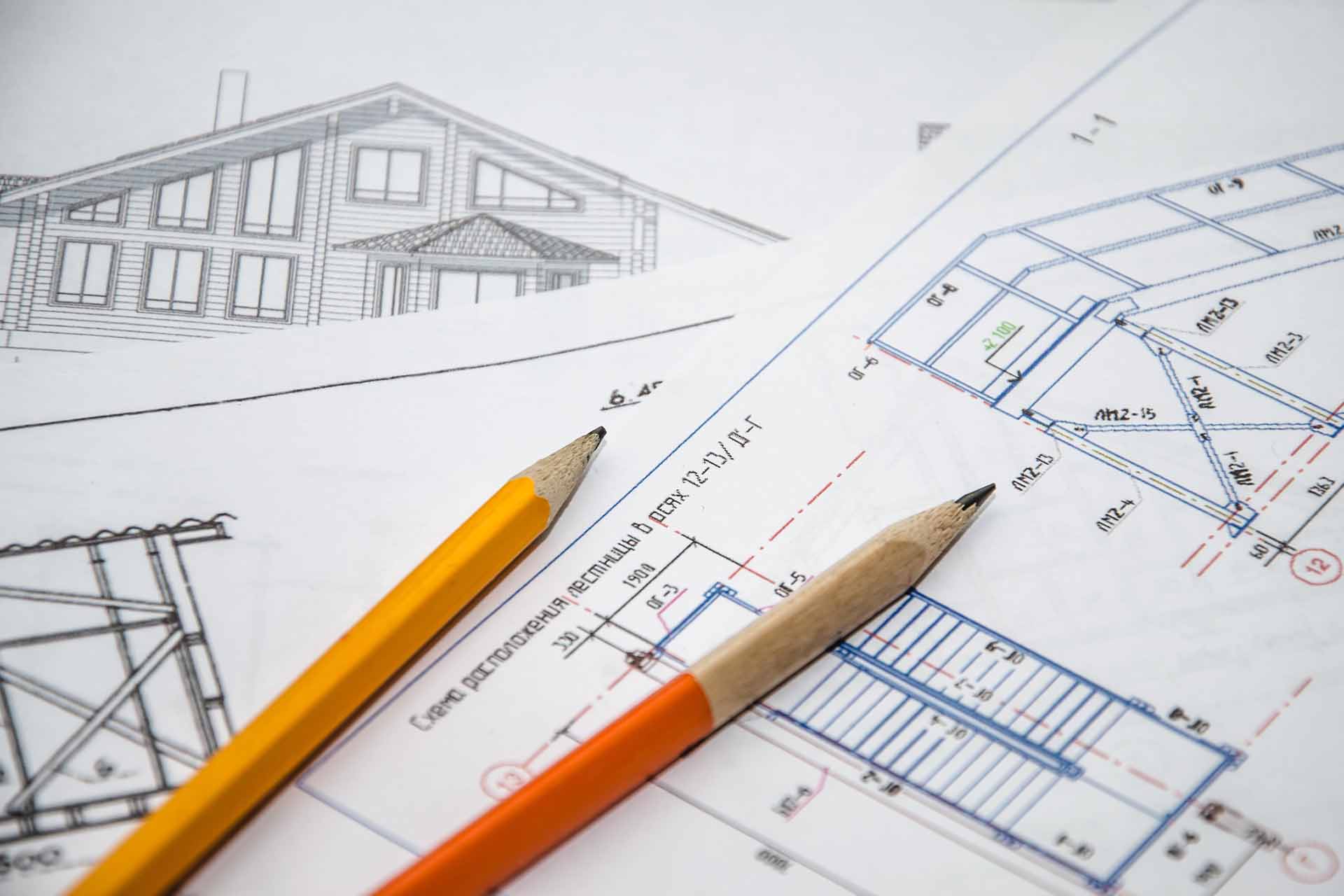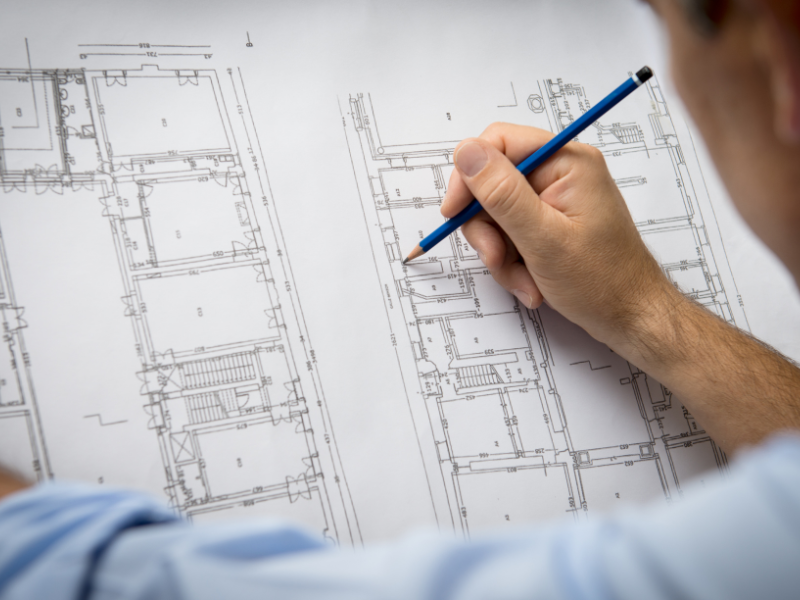Comprehending the Diverse Career Paths Available for Aspiring Architect
As an aspiring Architect, you have a globe of career courses waiting for you. Whether you're attracted to traditional design or the subtleties of lasting design, there's a specific niche that straightens with your rate of interests.
Typical Design: Creating Structures and Structures
Traditional style concentrates on making buildings and frameworks that mix functionality with aesthetic appeal. Your designs can reflect social heritage, showcasing regional practices while satisfying contemporary needs.
You'll develop abilities in drafting, model-making, and site evaluation, permitting you to picture and interact your concepts effectively. Engaging with customers, you'll need to recognize their vision and convert it into possible layouts.
In addition, constructing codes and sustainability methods are necessary in your work, ensuring your structures are secure and ecologically friendly. As you expand in your career, you'll locate chances in property, commercial, or also repair projects, each offering special challenges. Welcoming standard style leads the way for a meeting occupation that admires the past while shaping the future.
Urban Preparation: Shaping Neighborhoods and Public Spaces
As an aspiring Architect, you can play a crucial function as an urban coordinator, changing exactly how communities connect and function. By utilizing community involvement strategies, you'll assure that residents have a voice fit their environment. And also, incorporating sustainable style principles will help create rooms that not just satisfy today's demands but also protect the future.
Role of Urban Planners
While several might think of architects as the single dreamers behind buildings, city planners play a vital function in shaping the more comprehensive landscape of communities and public areas. By working together with different stakeholders, you'll help make parks, transport systems, and property areas that promote social communication and availability. Your expertise in spatial layout and neighborhood dynamics permits you to visualize future growth while maintaining cultural heritage.
Community Involvement Strategies
Effective neighborhood involvement strategies are important for city organizers to guarantee that the voices of locals are heard and valued in the planning process. To promote significant discussion, you must focus on open forums and workshops where community members can express their ideas and worries. By proactively incorporating and listening comments, you'll produce areas that show the neighborhood's requirements, inevitably leading to more lasting and successful city environments.
Sustainable Design Principles
When creating metropolitan areas, including sustainable layout principles is critical for producing environments that thrive both environmentally and socially. Think about integrating green rooms, like parks and gardens, to improve biodiversity and improve air quality.
Creating with water conservation in mind is likewise key-- think of rain yards and permeable surface areas to manage stormwater. Entailing neighborhood participants during the preparation process warranties that the spaces you develop satisfy their requirements and urge social interaction. By welcoming these principles, you'll add to vibrant, lasting urban landscapes that profit every person.

Landscape Design: Creating Lasting Outside Environments
As you check out landscape design, you'll uncover crucial style principles that develop functional and beautiful outside spaces. Lasting methods play an important duty in guaranteeing these environments flourish while minimizing ecological impact. And also, you'll find a range of career chances that allow you to make a genuine distinction in exactly how individuals communicate with nature.
Layout Principles in Landscape
Recognizing design concepts in landscape style is necessary for creating sustainable exterior environments that integrate with nature. You'll require to consider components like balance, percentage, and scale to guarantee your styles really feel natural and inviting. Integrating native plants not only improves biodiversity yet also lowers water usage, making your landscape resilient. Think of the circulation of room and how people engage with it; paths and seating areas need to welcome exploration and relaxation. Additionally, focus on seasonal modifications, designing with materials that match the environments year-round (Architect). By focusing on sustainability and visual appeals, you can produce exterior rooms that improve the area and advertise well-being. Embracing these principles will set a strong foundation for your occupation in landscape design.
Sustainable Practices Summary
Sustainable practices in landscape design not just focus on appearances but likewise focus on eco-friendly wellness and resource preservation. You can make spaces that promote dirt health and wellness, such as exercising and using organic products permaculture concepts. Inevitably, these practices assure your designs benefit both people and the atmosphere for years to come.
Profession Opportunities Expedition
With a solid foundation in sustainable practices, landscape architecture provides a selection of job courses that permit you to make a meaningful influence on the environment. You could work as a landscape designer, creating aesthetically pleasing and functional outdoor rooms, or focus on environmental repair, assisting to revive damaged ecosystems. Urban planners frequently collaborate with landscape architects to develop environment-friendly rooms in metropolitan settings, enhancing city livability. If you're passionate concerning education and learning, think about becoming a landscape architecture instructor, inspiring future generations. Additionally, you might deal with nonprofits concentrated on environmental sustainability or engage in research study to introduce new practices. Each course not just shapes gorgeous atmospheres but additionally promotes a healthier world for future generations.
Sustainable Style: Concentrating On Eco-Friendly Practices
As you explore your job in design, embracing eco-friendly methods can establish you apart in a competitive area. Sustainable style concentrates on producing structures that minimize environmental influence while improving owner well-being. By integrating eco-friendly materials, energy-efficient systems, and lasting structure techniques, you'll add to a greener future.
Beginning by gaining understanding of environment-friendly certifications like LEED or BREEAM, which can bolster your credentials. Take into consideration how natural light, ventilation, and thermal efficiency can enhance style. Work together with engineers and ecological specialists to introduce remedies that decrease waste and preserve resources.
Don't neglect the value of community participation-- appealing regional stakeholders can inspire layouts that integrate with the environment. check my reference As clients increasingly prioritize sustainability, your experience in eco-friendly practices will not only attract jobs however likewise meet your interest for accountable design. Accept this critical facet of the career, and see your job prosper.
Historical Preservation: Safeguarding and Bring Back Cultural Heritage
While you start on your building journey, think about the vital function of historic conservation in preserving our cultural heritage. This field concentrates on the defense and restoration of significant structures, websites, and structures that tell the tales of our past. By taking part in historic conservation, you'll assist protect the building tradition that shapes community identification.
As a historical preservation Architect, you'll examine historical relevance and evaluate the problem of frameworks. You'll work closely with chroniclers and conservationists to ensure genuine repair techniques are utilized. This career path enables you to blend imagination with study, enabling you to create services that value initial materials and craftsmanship.
Your work not just adds to sustainability by reusing existing structures yet also cultivates a dig this feeling of pride within neighborhoods. Welcoming this path will aid you end up being a guardian of background, preserving the stories and aesthetics that enhance our lives.
Inside Architecture: Enhancing Indoor Spaces
Historic conservation and indoor architecture both share a commitment to enhancing the constructed environment, however they concentrate on various facets. While historic preservation stresses maintaining a structure's historical and social value, interior design nos in on maximizing indoor rooms for functionality and aesthetic appeals.
As an ambitious Architect, you'll locate that indoor design enables you to mix creative thinking with technological abilities. You'll make spaces that not only look good but also promote comfort and performance. This field involves understanding how light, color, and materials interact within an area, impacting mood and usability.
You'll deal with various projects, from domestic homes to commercial offices, ensuring that each environment fulfills the demands of its owners. By focusing on customer experience, you can change interiors into functional and inspiring rooms, making a substantial effect on just how people interact with their surroundings. Welcome the possibility to improve interior atmospheres and shape the means individuals work and live.
Industrial Style: Merging Capability With Aesthetics
Commercial style plays click here to read a necessary duty in producing products that flawlessly blend visual appeals with performance, ensuring that what you use day-to-day is not only aesthetically attractive yet likewise useful. As an aspiring Architect, you could engage yourself in this area, concentrating on creating whatever from furniture to customer electronics. Your job entails comprehending customer requirements, products, and manufacturing processes, permitting you to produce cutting-edge options that enhance daily experiences.
In industrial layout, you'll commonly collaborate with producers, designers, and marketers, making sure that your layouts are not only stunning yet additionally feasible. You'll find out to stabilize kind and function, focusing on use without giving up design. By developing your abilities in laying out, 3D modeling, and prototyping, you'll be fully equipped to bring your concepts to life. This occupation path supplies a vibrant setting where creativity meets practicality, making it a satisfying selection for engineers interested in shaping the items of tomorrow.
Often Asked Questions
What Educational Accreditations Do I Need to Become an Engineer?
To end up being an architect, you'll require an expert degree in architecture, commonly a Bachelor's or Master's. Furthermore, you'll have to finish an internship and pass the Architect Enrollment Evaluation to exercise legally.
Exist Accreditation Requirements for Various Architectural Occupation Paths?
Yes, there're certification needs for various building paths. Architect. You'll require to pass exams, full internships, and often pursue specialized training, depending on your chosen emphasis, like landscape architecture, city design, or historical preservation
What Software Program Skills Are Necessary for Architects Today?

Just How Can I Gain Practical Experience While Examining Style?
You can gain sensible experience by interning at architectural companies, taking part in design competitions, offering for neighborhood jobs, or collaborating with classmates on real-world jobs. These chances boost your skills and construct useful links in the industry.
What Work Opportunities Exist Outside Standard Style Firms?
You can check out numerous job chances outside typical architecture firms, like city planning, indoor layout, landscape architecture, building management, genuine estate growth, or perhaps roles in sustainability consulting. Each offers one-of-a-kind challenges and rewards.
Whether you're drawn to standard architecture or the nuances of sustainable style, there's a particular niche that aligns with your interests.When creating city spaces, incorporating sustainable style principles is critical for developing atmospheres that prosper both ecologically and socially.As you check out landscape style, you'll uncover vital layout concepts that develop functional and gorgeous exterior rooms.Understanding design concepts in landscape style is essential for creating lasting outdoor environments that balance with nature.In industrial design, you'll frequently collaborate with producers, online marketers, and engineers, making certain that your layouts are not only gorgeous but additionally viable.
Comments on “Architect Workflow Optimization for Faster Project Delivery”